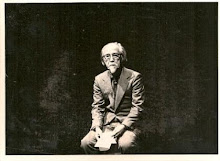
The resurrection of the dead is a well-mined topic utilized by countless storytellers from every society on the planet. It may well be that stories of the undead were told to explain phenomena that they observed yet did not have full comprehension of, either way these stories eventually moved away from being credible explanations for external phenomena, due to the elevation of the scientific method, and evolved predominantly as social tools to educate people on various social norms and taboos.
Tod Browning's Dracula is not merely the first supernatural horror film of the sound era but it also has the reputation of establishing many of the cliches of the horror film. Browning, a director of silent pictures who earned the reputation of being a man who made movies about the dark side of humanity, treats the supernatural in an understated way. He cuts away from any violent action allowing the audience to fill in the missing shot with an even more gruesome scene then what Browning could have come up with or the censors allowed him to shoot. A good example of this is during the sequence where Renfield and the Count get onboard a ship and travel from Transylvania all the way back to England. We are never witness to Count Dracula's carnage rather we are only allowed to see the aftermath, a ship filled with corpses, the captain lashed to the wheel, and finally the only survivor being a cackling lunatic.
With the help of his cinematographer, Karl Freund, Browning creates a very atmospheric film about vampires that never veers to far from reality. An example of this is the Count's introduction in his castle cellar, which begins with the camera moving towards several coffins on the ground. Followed by a cut of a hand slowly reaching out of a coffin lid. Then Browning cuts between several shots of rats crawling on the cellar floor, possums creeping around on the dirt, and even a bug which emerges from its own coffin. Finally the Count appears standing upright, his black cape draped over his body, and then Browning pushes the camera towards the Count's face, drawing the audience's attention to his eyes which appear to be looking right at us as we sit and watch him. With this short and relatively simple introduction the viewer quickly understands that Count Dracula is one of the "Children of the night" who, like the vermin that scurry on the floor, hunts his prey in a cold and calculating manner so that he may feed on them.
Much of the film's popularity is due to Bela Lugosi's performance. Lugosi, a Hungarian expatriate, had played the role on Broadway and although the film's producer thought him ill-suited for the part, all the reasons why Lugosi shouldn't have played the role contributed to creating the most well-known portrayal of Count Dracula. Unlike Bram Stoker's Dracula, Lugosi is suave and good looking. Although he knew very little English Lugosi learned his lines phonetically and combined with his thick accent gave a concentrated performance. He spoke his lines in an elongated manner, stretching syllables as he spoke them. The gestures he made did not just terrify the audience and his victims but also exuded a sexual charge that attracted and repelled those unfortunate enough to get in his way.
When Dracula was first released the Great Depression had just begun and its box office success may be due in part to the public's desire for entertaining distractions, but even if that was the case it is not such a stretch to read the film as an indirect comment of what was going on in the country at that time. Count Dracula representing the corrupt and gluttonous mass of people, denizens of the Prohibition era nightlife, had become less than human after spending an entire decade indulging in the short term pleasures of the flesh. With their fangs stuck deep into the country's jugular they bled the nation just as the Count does his victims in the film.
The undead are the last vestiges of the superstitious world that many still cling on to. Tod Browning understood that the reasons why we fear these monsters is that they played on our basest fears of death and the otherworldly. None of us are sure what waits for us after we die but a simple glance at the mirror can be a reminder for many that death is always at work. By not completing the transition into the afterlife Count Dracula has regressed into an animal that lurks in the dark, incapable of seeing what he has become. The film doesn't treat the monsters as a separate species, but rather a possible offshoot of humanity; those tainted by a fear of letting go. They skulk waiting for the right time to strike their victims, but what few battles they win are bitter sweet for they are resigned to live in cold damp earth separated from many of the things that had made life worth living.




1 comment:
I high appreciate this post. It’s hard to find the good from the bad sometimes, but I think you’ve nailed it! would you mind updating your blog with more information? buy dvd stranger things season 1
Post a Comment